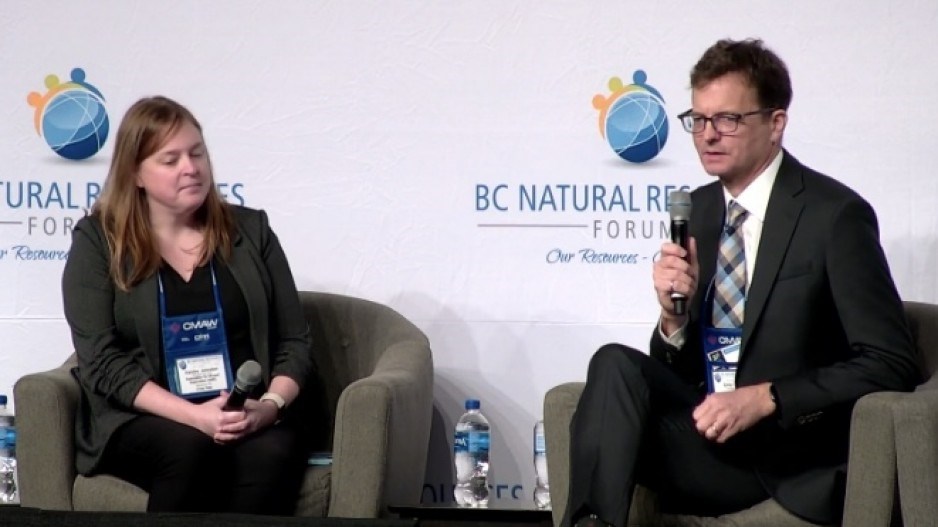B.C.’s electrical grid may be 98% “clean” and renewable, thanks to its vast hydro power resources, but 70% of B.C.’s primary energy use is still from fossil fuels, BC Hydro CEO Chris O’Riley said in an address today at the BC Natural Resources Forum.
So how much more power will B.C. need in the coming decades to achieve full decarbonisation?
To reach net zero, it has been estimated that B.C. may need to more than double its current power generating capacity, possibly even triple it, raising the question: Is the new Site C dam going to be enough to meet the “electrify everything” imperative?
“I've been asked that a number of times through the course of the last few days,” O’Riley said. “The short answer to that is yes, for now, and especially so with Site C coming on and the next year or so.
“The longer answer is yes, and we have a plan to acquire more energy as we need as we need it and that will be renewables, likely wind and solar, likely in the north.”
BC Hydro’s biggest challenge isn’t generating enough power, but getting it to where it’s going to be needed. There is a growing demand from industry for large amounts of power, as they try to decarbonize their industries.
Jason Klein, CEO for LNG Canada, recently said that, should the partners behind the project sanction phase two of the project – adding two more processing “trains” to the two being built in Kitimat – they will be powered by natural gas, not electricity.
There simply isn’t enough transmission capacity to go to e-drive, he suggested. At a session Wednesday, Klein suggested the LNG Canada plant could potentially move to electric drive at some point in the future, should the transmission capacity become available.
O’Riley said transmission is major challenge for BC hydro, west and north of Prince George.
Building new high-voltage transmission lines is no small thing, and there’s a bit of chicken-and-egg dilemma for BC Hydro. There is a potentially big demand for clean power from industry. Industries can’t commit to electrification without adequate transmission, and BC Hydro can’t commit to building new transmission without big industrial customers making final investment decisions.
“While we currently have enough transmission capacity to serve the existing and committed load in the north coast -- and we've got room to spare -- we do have an unprecedented queue of potential customers that have applied for service and these are mines and LNG projects, port facilities and the like,” O’Riley said.
“Most of those projects have not yet committed to their own investments, nor have they committed to taking service from BC Hydro.”
He said major transmission projects are expensive, time-consuming, and have large impacts on the land and indigenous rights.
“The time-lines are often longer than the decision cycles in corporations,” he said.
That said, he added there two projects underway to deliver more power to the North coast region.
One is a new Prince George to Terrace capacitor project. Three new capacitor stations will increase electrical throughout by 500 megawatts on existing lines. O’Riley also today announced a new plan to twin a 500-kilovolt transmission line between Prince George and Terrace.
BC Hydro will be asking for an expression of interest to gauge interest from potential partners and customers on the twinning project.
As for Site C dam, the dam itself is about 90% complete, and the project overall more than 70% complete. The official target for commissioning is still nearly two years away, though O’Riley suggested BC Hydro could potentially finish the project by the end of this year.
“Our official schedule has two years, or 20 months, till we get first power on the project,” O’Riley said. “We do have a shot at getting first power the coming December -- so this year. Lots of things have to go right for that to occur.”



